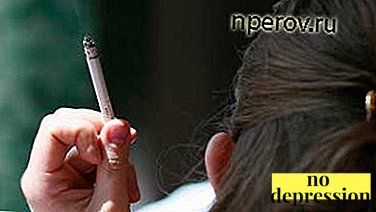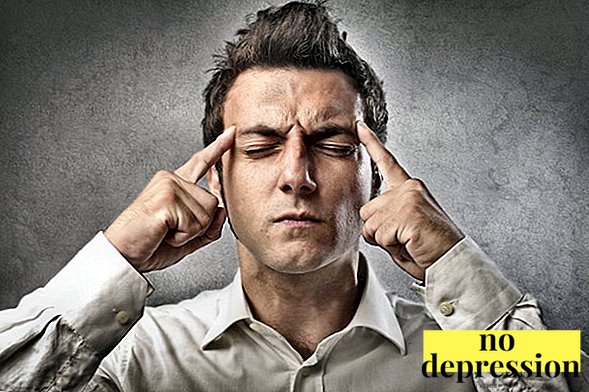Most of the chronic diseases in humans appear due to psychological problems.
Body and soul are inextricably linkedtherefore, any experiences always reflect on the physical condition.
This problem is dealt with by such a section of medicine as psychosomatics.
The table of diseases was created in order to understand what problems led to the appearance of certain symptoms and how can they be adjusted.
Psychosomatics in psychology

Psychosomatics - This direction in psychology, studying the influence of the psychological state of a person on his physiology.
That is, investigates the causal relationships of disease.
Even the ancient healers believed that any disease is a consequence of the disunity of the human body and soul. The body is too sensitive to any negative thoughts.therefore, the body reacts to them with painful manifestations.
From the point of view of psychosomatics, pain is given to a person so that he thinks about his thoughts, which give him the wrong attitude.
The task of the psychologist is to find out what internal problems prevent a person from being healthy.
Psychosomatic direction in medicine
In medicine, psychosomatic direction beginning to actively develop by the middle of the 20th century. Then, most doctors recognized the close relationship of human psychology and physiology.
Psychosomatic medicine treats a person not just as a physical body, but in relationship with the outside world. Modern doctors proved the psychosomatic nature of many diseases: asthma, cancer, allergies, migraines, etc.

For the emergence of psychosomatic illness predisposing factors are:
- predisposition;
- life situation.
Predisposition - This is the genetic readiness of the body to certain diseases. The impetus for the development of pathologies is the life situation and its perception by the individual.
If the disease is recognized as psychosomatic, it does not mean that it is contrived. The patient has physiological changes that require adjustment in close relationship with the psychological state.
Ancestors of science
Who first introduced the term "psychosomatics" in medicine?
The first physician who proposed using the term “psychosomatics” in 1818 was Johann Christian Heinroth, a psychiatrist from Leipzig.
However, to develop this direction was only a hundred years after that. Dealt with these issues psychiatrist Z. Freud, which was expressed in his theory of the unconscious.
In the formation of psychosomatics as a section of medicine, many representatives of various fields and schools took part.

The founder of modern psychosomatic medicine is considered Franz Gabriel AlexanderAmerican psychoanalyst.
Canadian Endocrinologist Hans Selye for his work "Theory of Stress" received the Nobel Prize.
Theory of Franz Alexander
Franz Gabriel Alexander is recognized as the founder of psychosomatic medicine. His book “Psychosomatic medicine. Principles and practical application " gained wide acclaim.
In the book, the doctor summarized the results of his work on the study of the influence of psychological causes on the appearance, course and treatment of diseases.
The author argues that the psychological factor has the same meaning as the physical factor and must be subjected to no less careful study.
According to the doctor, psychological and physiological factors differ only in the subjectivity of perception and can be transferred using verbal means.
Alexander's theory is based on the following statements.:
- Negative thoughts will necessarily lead to bodily diseases. To recover, you need to change your thoughts.
- Any organism has the ability to self-atomization. Only the patient’s disbelief in one’s strength prevents self-healing.
- No one can cure a person except himself. Doctors are only meant to help the patient choose the right direction.
- A disease is sent to a person so that he can change his thoughts and habits.

Diseases
For psychosomatic diseases include physiological disorders that occur under the influence of psychological factors.
According to statistics, almost 30% of diseases have a psychosomatic nature.
These diseases are divided into 3 groups:
- Conversion manifestations. The patient has symptoms of diseases that are not really there. Usually the patient thus tries to solve some kind of conflict, to achieve a certain goal. The main conversion symptoms: hysterical convulsions, paralysis, psychogenic blindness and deafness, vomiting, tachycardia.
- Functional diseases. The patient has impaired functioning of certain organs without any organic changes in them. This may be heart pain, indigestion, migraine. They occur on the background of depression, sleep disturbances, panic attacks, hanging fatigue.
- Psychosomatosis. Disease is based on a psychological factor that has led to organic organ damage. Such diseases include: asthma, ischemic disease, osteochondrosis, gastric ulcer, diabetes mellitus, neurodermatitis, infertility of unknown origin.

Causes of disease
The basis of the emergence of psychosomatic illness lies the conflict between the body and soul of the patient.
Psychologists say that such diseases can be triggered by the following emotions: sadness, joy, fear, anger, interest.
Among the main causes of psychosomatic disorders are called:
- Past experience. The psychological traumas suffered in childhood have especially great influence.
- Conflict between conscious and unconscious. When one of the parties wins, the other begins to "protest", which is expressed by various symptoms. This usually happens when a person experiences anger, envy towards others, but is forced to hide it.
- Benefit. A person, without himself realizing it, receives certain “bonuses” from his illness. For example, the attention of loved ones, the opportunity to relax, etc.
- Identification Syndrome. The patient identifies his illness with another person who has identical problems. This happens between close people who have a strong emotional connection.
- Suggestion. A person can inspire non-existent diseases himself or is influenced by others. For example, symptoms appear after viewing certain programs or reading books about diseases.
- Punishing yourself. The patient feels guilty, and the disease helps him survive.
Psychosomatic diseases usually occur in people with a moving psychethat can not withstand stress.

Psychologists call the following predisposing factors:
- obsession with personal problems;
- pessimism, negative view of life;
- lack of love for yourself and others;
- the desire to control everything around;
- lack of sense of humor;
- setting unattainable goals;
- ignoring the needs of the body;
- painful perception of another's opinion;
- inability to express their desires and thoughts;
- rejection of any changes, the denial of everything new.
Symptoms
The appearance of symptoms of psychosomatic illnesses always coincides with the moment of strong spiritual experiences and experienced stress. The most typical manifestations are:
- Heartache like an attack of stenocardia.
- Headaches. These can be migraines, pain in the neck, pain in half of the face of the type of inflammation of the facial nerve.
- Often the patient feels as if a pressure helmet is put on his head ("Neurasthenic helmet"). This is due to muscle spasm due to stress.
- Increased blood pressure. This symptom is almost 80% associated with psychosomatics.
- Epigastric pain. They imitate ulcer, pancreatitis, cholecystitis. At the same time, changes in laboratory tests are insignificant. A person as if “does not digest” the current life situation. The relationship of stress and biliary dyskinesia has been known since ancient times. A person who is prone to aggression and irritability constantly releases the stress hormone cortisol. As a result, the bile thickens, its outflow is disturbed. Hence the name "gall man".
- Digestive disorders. Neurotransmitters, which are responsible for normal digestion, are actively synthesized in the intestinal walls. With depression there is a decrease in the production of these substances. Therefore, constipation, diarrhea, flatulence. Often, intestinal problems occur in children who do not want to go to school or for the exam.
- Back pain. The main nerves and arteries pass through the spine. At the moment of spiritual experiences, a spasm occurs, a painful impulse is formed.
- Difficulty swallowingfeeling "lumpy throat." The extreme manifestation is the loss of voice. This is due to the fact that a person is prohibited from expressing true emotions and thoughts. Usually the problem goes back to early childhood.
- Dyspnea no signs of lung disease. The patient is not able to "breathe deeply," which at the time of emotional tension manifests itself in this way.
- Visual impairment. The patient cannot focus on objects. This expresses the unwillingness of the patient to see his problems. Over time, accommodation spasm can lead to glaucoma.
- Dizziness, nausea, fainting. Associated with vasospasm.
- Attack of fever or chillscramps.
- Sleep disturbance.
- Lower abdominal pain in women, infertility, lack of libido.

Such symptoms may occur immediately after a stressful situation, and may be delayed.
Treatment

How to treat? In Russia, there are no somatologists; therefore, psychosomatic pathologies are used to treat psychotherapists and neurologists.
They use a combination of psychotherapeutic and medical methods.
First of all, the psychotherapist tries during the conversation find out the cause of the disease and explain to her patient.
If the patient is aware of the nature of his illness, then the cure will go faster. Often there are situations when the patient has already "grown together" with his illness and she has become part of his character.
There is also the “fear of change” and the desire to benefit from pathology. The only solution is pharmacological adjustment symptoms.
When choosing a therapy, the doctor is guided by the degree of symptoms, the condition of the patient, the root cause of the disease. The main methods of psychocorrection are: gestalt therapy, individual and group classes, neuro-linguistic programming, hypnosis techniques.
In difficult cases, tranquilizers and antidepressants are prescribed.
In addition, it is necessary symptomatic therapy. For this purpose, analgesics, antispasmodics, drugs that reduce pressure, improve digestion.
What can a patient do on his own?
If the patient is aware of his problem, he can speed up the healing process on his own. Lessons give a good effect exercise, yoga, breathing exercises, swimming.
Regular walks in nature, normalization of the day regimen, meetings with friends also help in treatment. Sometimes you need to go on vacation to turn on the "reboot" mode.
The approach to treatment in children

The main problem in the treatment of childhood psychosomatic diseases is their diagnostics.
If the child constantly recurs colds, intestinal disorders, then you should look for psychological causes.
Perhaps a child difficult to adapt in kindergarten or school, he has a conflict in the team. It happens that the baby suffers from excessive parental care. Such children are constantly tormented by sinusitis, rhinitis, it is "difficult to breathe" for them from excessive care.
Parents need to build a relationship of trust with the child, learn to hear it. He must feel that he is understood, supported and not thrown into trouble.
From psychotherapeutic techniques usually used art therapy. Also required are sports activities, especially playing games, where small children learn interaction with other children.
Table
The table of psychosomatic diseases will help to understand the cause of certain symptoms:
Disease | Cause | Treatment approach |
Gynecological problems | Sense of insecurity, powerlessness. Inability to self-realization, fear of men. Rejection of their feminine essence. | Accept yourself, realize that fear is inside, and not in others. To understand that being a weak woman is not scary and not ashamed. |
Oncological tumors | Nurturing the old grudges. Anger on others. Impossibility to show emotions and feelings. Excessive self-criticism. The perception of other people's problems above their own. | Let go of past insults. Unleash emotions. Accept yourself with all the flaws. Stop worrying about others. |
Cardiovascular diseases | Lack of love Fear of being alone. Suppression of emotions. Workaholism. Suppression of anger. Setting unattainable goals. | Set more realistic goals. Love yourself and others. Take a vacation. Do not be afraid to express your emotions, even negative ones. |
Bowel disease | Fear of losing control over all. Fear of change. Uncertainty. | Take life with all its new manifestations. Stop controlling everyone. |
Psychosomatics of diseases: table of Louise Hay.
Human psychology and physiology are inextricably linked. Problems in one area cause illness in another. If a person is able to realize this connection, he will avoid new problems and get rid of old ones. Life is too short to spend on negative emotions and diseases.
Is psychosomatics a hoax? Opinion psychologist:



